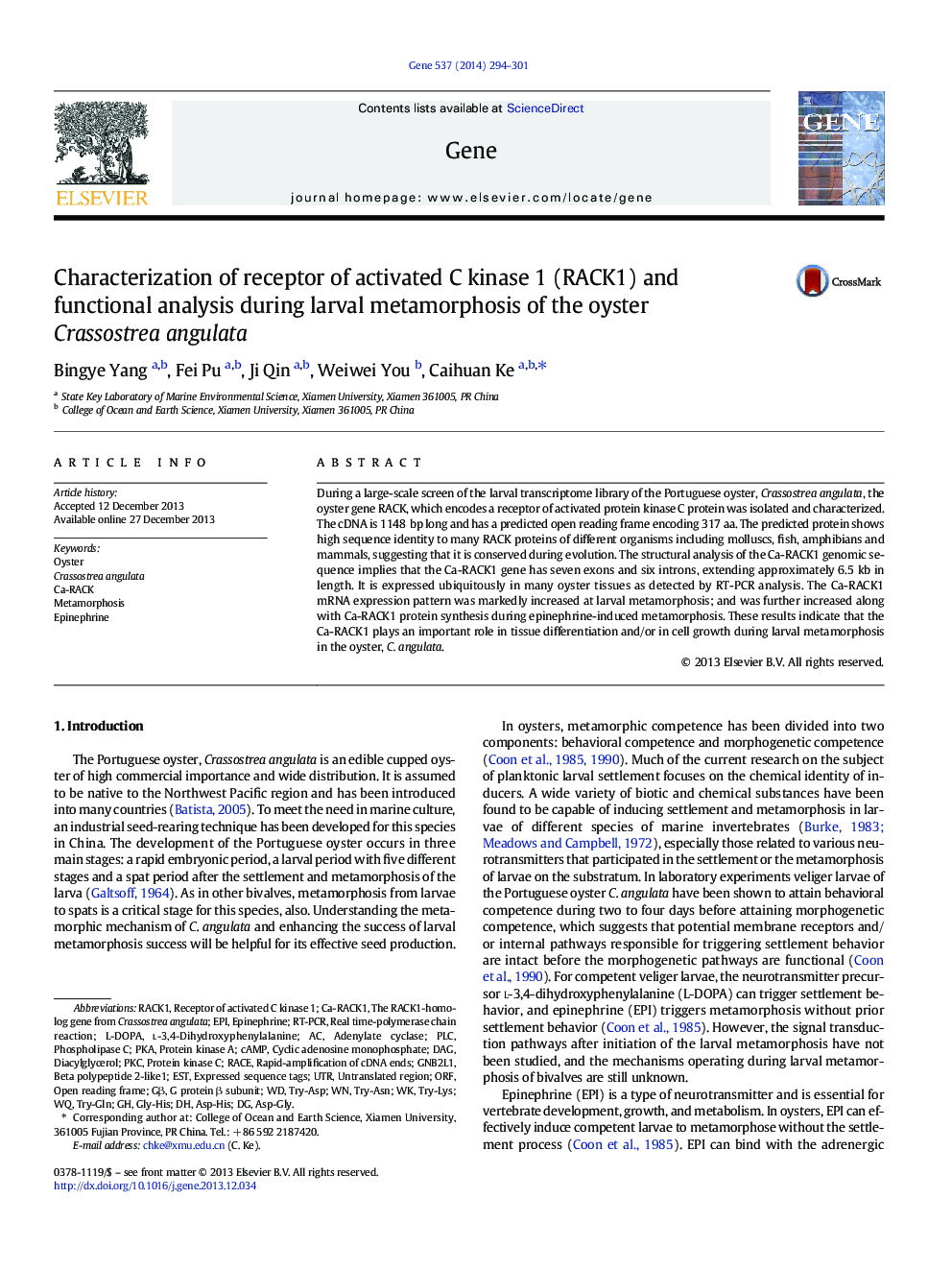| Article ID | Journal | Published Year | Pages | File Type |
|---|---|---|---|---|
| 2816684 | Gene | 2014 | 8 Pages |
•Ca-RACK1cDNA and genomic sequences were characterized from Crassostrea angulata.•Ca-RACK1mRNA expression varied between organs.•Ca-RACK1mRNA was highly expressed in the larvae during metamorphosis.•Ca-RACK1 mRNA and protein were all regulated by epinephrine.
During a large-scale screen of the larval transcriptome library of the Portuguese oyster, Crassostrea angulata, the oyster gene RACK, which encodes a receptor of activated protein kinase C protein was isolated and characterized. The cDNA is 1148 bp long and has a predicted open reading frame encoding 317 aa. The predicted protein shows high sequence identity to many RACK proteins of different organisms including molluscs, fish, amphibians and mammals, suggesting that it is conserved during evolution. The structural analysis of the Ca-RACK1 genomic sequence implies that the Ca-RACK1 gene has seven exons and six introns, extending approximately 6.5 kb in length. It is expressed ubiquitously in many oyster tissues as detected by RT-PCR analysis. The Ca-RACK1 mRNA expression pattern was markedly increased at larval metamorphosis; and was further increased along with Ca-RACK1 protein synthesis during epinephrine-induced metamorphosis. These results indicate that the Ca-RACK1 plays an important role in tissue differentiation and/or in cell growth during larval metamorphosis in the oyster, C. angulata.
